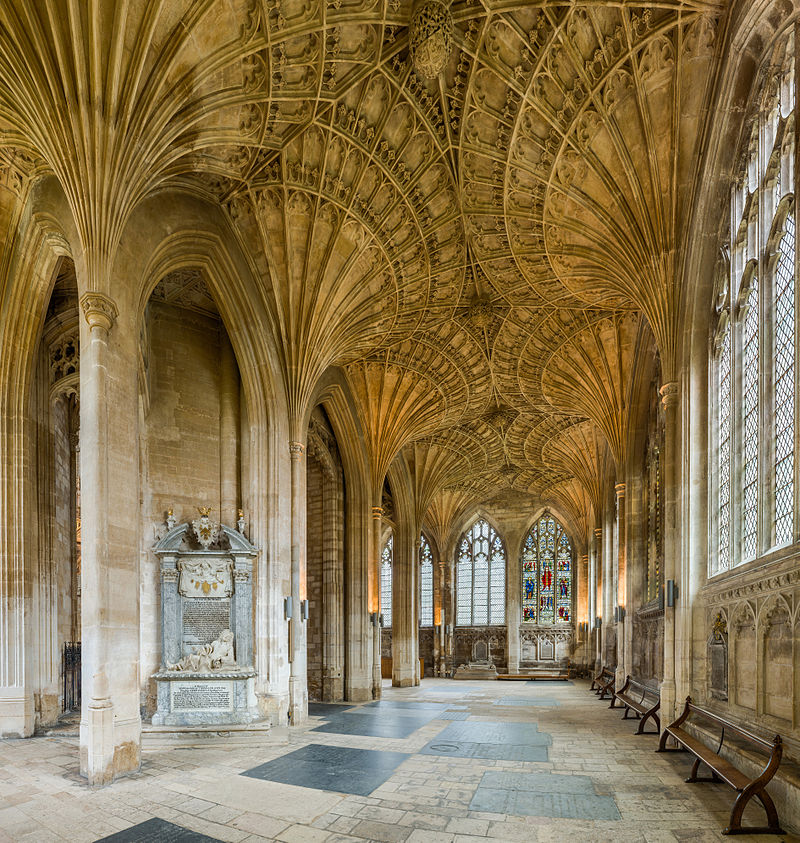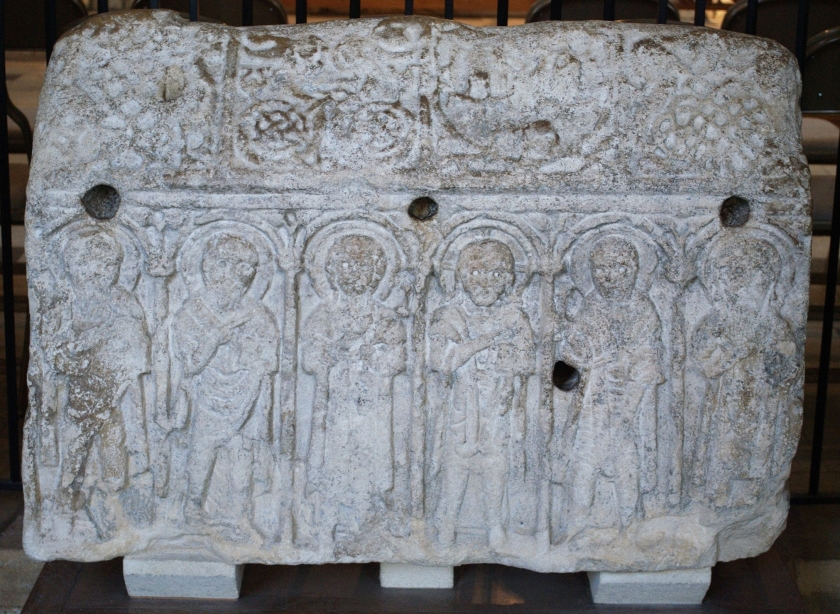Behind the main altar in Peterborough Cathedral, in an alcove of the Lady Chapel, lies an ancient stone carving: the Hedda Stone. This medieval carving of 12 monks, six on each side, commemorates the destruction of the Monastery and the death of the Abbot and Monks when the area was sacked by the Vikings in 864.

In the 7th Century, Cambridgeshire and its environs was dramatically different than we now know. The Shire was part of the Anglo-Saxon Kingdom of Mercia – one of the many fractured states of medieval England. Peterborough at the time was known as “Medeshamstede”, which translates loosely to “Homestead belonging to the Mede” and according to the Anglo-Saxon Chronicle, had gained this name from the monastery which was founded there in the 7th Century. The Venerable Bede also mentioned “Medeshamstedi”, a latinized version of the area, in 670. Despite these references to the Monastery at the site, Peterborough’s history is even more ancient, with its Bronze Age Settlements and Roman history, but those are discussions for another day.
The Medeshamstede Monastery, often called Peterborough Abbey by modern historians, was an important ecclesiastical centre in the Kingdom of Mercia, located along the River Nene, in a boggy area or fen. According to Bede and the Royal Charter of the Mercian King Wulfhere, the Monastery was founded by Sexwulf, who became its first Abbot, likely between 653-656. Hugh Candidus wrote many centuries later, in the 1100s, that Sexwulf built a great Monastery and “laid as its foundations some great stones, so mighty that eight yoke of oxen could scarcely draw any of them”. One can imagine the size and importance of the Monastery, which now forms much of the foundations of Peterborough Cathedral, for Candidus also wrote that Sexwulf strove “to build no commonplace structure, but a Second Rome, or a daughter of Rome in England”. The Monastery likely played a key role in the Christianization of Mercia through the establishment of daughter churches throughout the Kingdom. By all appearances, the Monastery thrived and was a centre of Christian scholarship until the Vikings came.
In 870, according to the Anglo-Saxon Chronicle, the Viking invasion of Mercia reached Medeshamstede and the Abbey was razed, the Monks slaughtered. The remarkable Hedda Stone, a two-sided carving that memorializes the massacre of the Abbot and Monks in 870, carved a few years after the event, is the most prominent surviving artifact from Medeshamstede. It is a haunting piece, for the eyes of the monks peer out from carved sockets, worn and weathered by time.

There are no contemporary recollections of the razing of the Abbey. However, the violence of Viking raids, the invasion and settlement of England which began in June 793, still shocks. The raid on the Abbey on the Holy Island of Lindisfarne, in Northumbira, was called an atrocity at the time. One contemporary wrote: “Never before has such terror appeared in Britain as we have now suffered from a Pagan race… The heathens poured out the the blood of saints around the altar, and trampled on the bodies of saints in the temple of God, like dung in the streets.”

